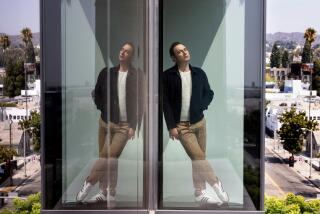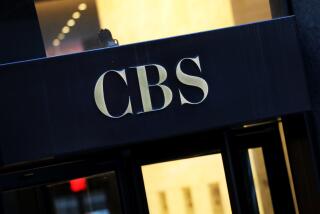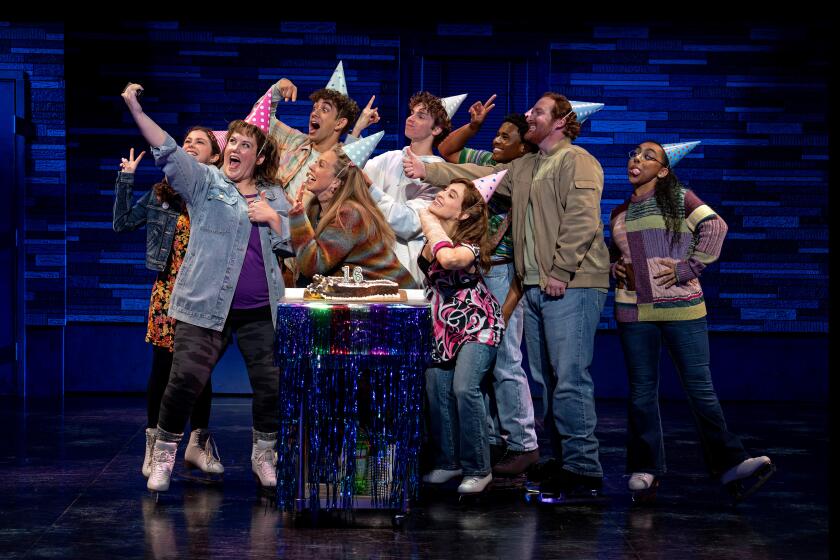ART REVIEW : Pfahl’s Landscapes: A Bit of Illusion : Art: The modernist’s gorgeous photographs of America comment on current life with surprising images that can fool viewers.
John Pfahl is not as preachy as a pontiff, even though a wiseacre did recently refer to him as “John Pfahl II.” He is 53, lives around Rochester, N.Y., and makes gorgeous photographs of the American landscape, mainly in color. The photographic sphere holds his work in such respect that in 1990 Cheryl Brutvan organized a traveling retrospective of more than 100 prints for Buffalo’s Albright-Knox Gallery. Titled “A Distanced Land: The Photographs of John Pfahl,” the show is now at the County Museum of Art after stops in Chicago and Atlanta.
The merest scan of the oeuvre evokes the grandeur of the nation’s topography and the artists traditionally associated with painting it. There is quite a lot of the spectacular sensibility of Frederick Church. Pfahl even made a homage to his view of Niagara Falls. It’s impossible to avoid seeing the Hudson River School in the more picturesque images Pfahl captured around his home state. There are whiffs of the Luminists and thoughts of French Barbizon and Impressionism.
It doesn’t take long, however, to figure out that Pfahl is an American and a modernist. These days that tends to mean that he makes his art in an imposed ambience of doubt and questioning. It’s fairly amazing to contemplate the amount of self-directed suspicion that has plagued the native artistic conscience in the two decades reflected by this exhibition.
The catalogue is handsome and its essays by Brutvan and Estelle Jussim are smart. It includes a picture of Robert Smithson’s classic 1970 earthwork “Spiral Jetty” and a quote from artist Sol Lewitt, “The idea becomes the machine that makes the art.” Both remind us that the ‘70s snuffed the optimism of the Pop era and introduced the reformist zeal that lurks in Conceptualism.
The mind echoes with buzz-phrases of the epoch, all of which tend to find artists uneasy about the traditional value and function of their trade. They suddenly decided there are too many objects in this world so artists should stop making them.
They should stop making them because, no matter how noble their intentions, their works wind up expensive commodities that just make the rich richer. They should stop making them and do something to correct the mess their species has made out of the planet. They should stop making them because art is all just illusions anyhow. Photographs are especially guilty because people think photographs tell the truth. The politically correct photographer must tell the viewers he is lying to them.
You can’t knock reform in this country. It’s as American as Cotton Mather, Carrie Nation and Ross Perot. It carries with it admirable intentions that can make the world better. It is also inclined to tell people what to do. If artists have any mandate at all, it is to resent and resist being told what to do. Not everybody is a social reformer by temperament.
It’s not quite clear where Pfahl falls out in this debate. The issues are clearly on his mind, but he is too much a Romantic to reject art and too witty to scold about the environment the way Lewis Baltz does.
LACMA’s curator of photography Robert A. Sobieszek says Pfahl’s show was easy to hang because he works in series. The methodical visitor who starts things at the beginning will find a perfect frontispiece to the exhibition in “Moonrise Over Pie Pan.” Taken in Utah’s Reef National Park, it shows a barren, rugged hunk of real estate with a moon risen over the horizon. Clearly an affectionate send-up of Ansel Adams’ “Moonrise Over Hernandez,” it contains a crucial difference. Well below the horizon shines another orb, exactly the size of the moon and even more shining. It’s a pie pan placed so as to derail our sense of space.
It’s conceptual all right, but it seems to say, “Right, photographs fool us but the truth is everybody enjoys a good illusion.” Pfahl goes on merrily thus for the rest of the series “Altered Landscapes.” He sticks tape on columns and walls, placing it to look like floating perspective lines. A piece of net on a dock looks like it’s hovering flat in front of us. It’s actually laying on the ground, cut to fool the camera into missing the perspective it would normally record. Pfahl places strips of lace on a bluff overlooking the surf so foaming water becomes fabric and vice-versa. It gets a little precious but makes its point.
“Picture Windows” and “Video Landscapes” ruminate on the state of landscape in a domesticated society where we see most of it out the window or on the telly. Among the strongest sets is “Power Places.” Here he shoots landscapes in accents that range from European sublimity to Chinese subtlety. Each, however, includes a view of a nuclear or hydroelectric facility. He compares industrial society’s notion of a “power place” with those of American Indians, one being about mechanical clout, the other about spiritual potency. Blessedly he does not moralize. He finds both visually compelling. The rest is up to us.
He’s not always so judicious. “Missile/Glyphs” is a series of diptychs juxtaposing images of ancient petroglyphs with cropped shots of deadly projectiles. The set seems both forced and pointless.
“Arcadia Revisited” and other series on clouds, waterfalls and smoke put Pfahl back on track. One shot looks at river rapids from the perspective of a fish, and you can feel the cold, black water surging around you like a mad lover. “The Great Falls of the Passaic” talks about how a sensible use of natural power made industrial America great and serene. Clouds of smoke belching from the stacks at Bethlehem Steel may be killing us with pollution, but Pfahl admits he finds them as spectacular and bracing as Kurosawa looking at a Samurai battle or J.M.W. Turner having himself lashed to a mast so he could enjoy the thrills of a nice typhoon.
Pfahl’s is an exhibition that proves again you make the best art when you play it straight.
Los Angeles County Museum of Art, 5905 Wilshire Blvd., to May 2. Closed Monday (213) 857-6000).
More to Read
The biggest entertainment stories
Get our big stories about Hollywood, film, television, music, arts, culture and more right in your inbox as soon as they publish.
You may occasionally receive promotional content from the Los Angeles Times.










